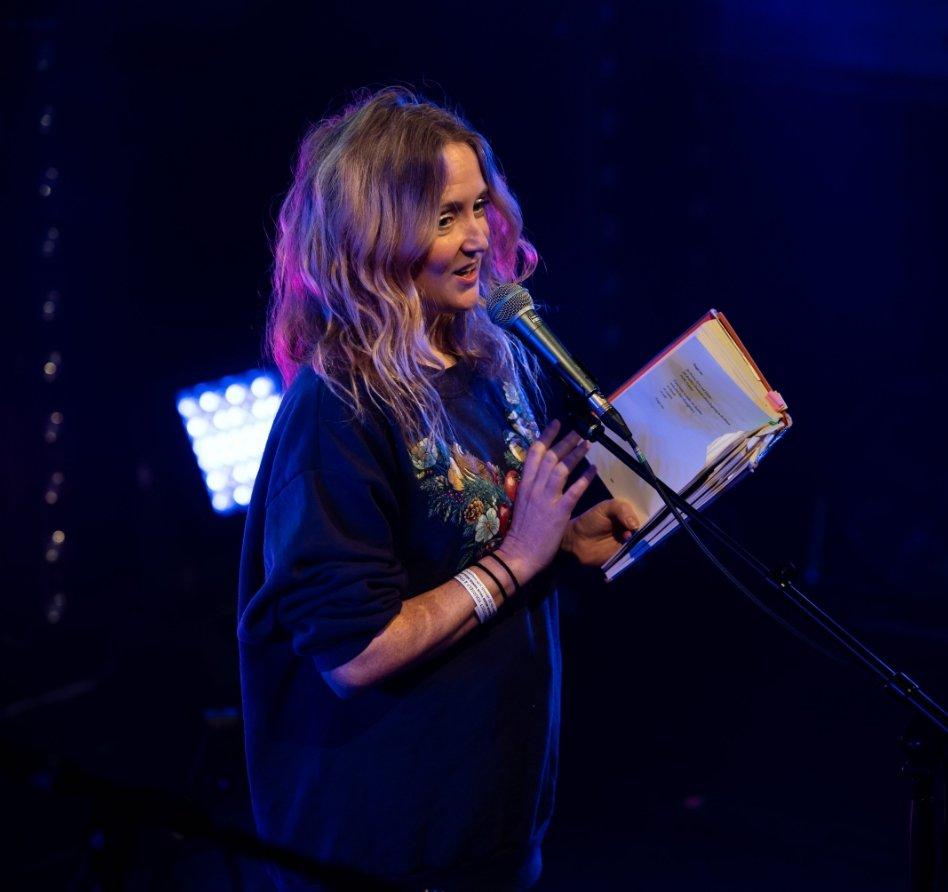#POETRYTOK
How TikTok is bringing poetry to pop culture

Words
ANNIE WHEATLAND-CLINCH
Photography
DEREK HENDERSON
For years, the soul-baring, intimate and often cerebral nature of poetry confined poets and their work to coffee shop corners and small festival stages. If you were into it, you could seek out group readings or buy a book and sit in the park. But it never really garnered the attention of the masses, minding its own (deeply personal) business – until now. Over the last year, poetry has become the latest art form to trend on social media, catapulting prose into the digital zeitgeist and demystifying its high-brow, not-for-everybody reputation.
“I think poetry can be intimidating for some people, especially the younger you are,” says poet, and author of Slug, Hollie McNish, who recently started using TikTok to share her work. After fifteen years of performing and seven published books, Hollie says it was her daughter who eventually convinced her to set up a TikTok account to recite her poems. “People were reading my poems and reviewing my books on there, so it seemed kind of rude not to embrace it.”
On TikTok, #poetrytok has over 4 billion views, on Instagram, 4.6 million users have used the hashtag #Instapoet and YouTube, according to poet Nikita Gill, continues to be a ‘go-to’ platform for poets and poetry fans to discuss all things prose. “I found a lot of my love for poetry through spoken word artists on Youtube,” the British-Indian writer tells us, “You’ve got to look at how social media was sold to us in the first place – these platforms were pitched as small communities.”
 @nikita_gill |  A Red-Gold Respite by Nikita Gill |
Boasting over 700,000 followers, 'small’ doesn’t feel like the right word to describe the community Nikita has garnered across Instagram and TikTok. But these numbers aren’t unusual for #Instapoets. The popularity of short-form work across the platforms soared after modern poet Rupi Kaur paved the way for a new style coined as ‘Instapoetry’. The style breaks all traditional rules associated with poetry, avoiding strict line guides or stanzas, putting emphasis on shorter, more confessional verses that home in on emotions.
A new pocket-sized prose, easily modified to fit any platform when needed, says Nikita. “Apps like TikTok have given poetry the capacity to reach a lot of people. Poets aren’t asking you to invest in a book, or short story, they are simply asking you to invest in a moment.” And the online embracing of these ‘moments’ hasn’t gone unnoticed by long-term commentators either.
There’s something about this short-form space that really works for poetry, says Director of The Poetry Society Judith Palmer. “Poets of all types love social media. It’s helped many new and emerging writers find their feet, find community and discover some inventive, entertaining and skilful poets.”
 @holliepoetry |  exactly as I like by Hollie McNish |
With poetry in vogue, Nikita and Hollie have a new, much younger pool of poetry enthusiasts at their fingertips. “Often young people are going through heartbreak for the first time. As adults we’re desensitised to experiencing those things, but TikTok has created a place they can turn to,” says Nikita. “The beauty of the poetry being shared is that it’s sharing universal human experiences.” With 60% of TikTok’s users being Gen Z, Hollie says she’s noticed a big difference between users engaging with her content and the faces she sees at shows.
“When I was younger, poetry was like a secret hobby and I reckon I’d have been embarrassed to ask a mate to come to a gig with me.” Now young people have a safe space on their screens.
“I think social media has democratised the world of literature a bit more. It makes it more accessible, whether that’s through recommendations or online gigs or poems, and for me, that can only be a positive.”